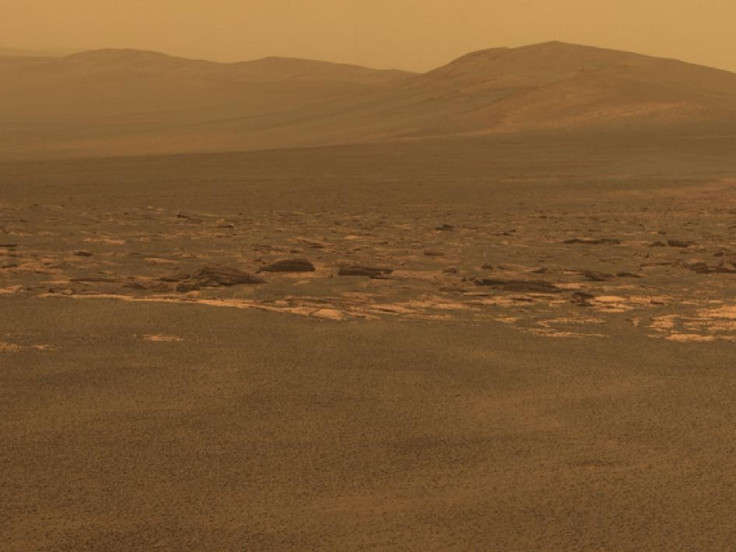Mars Rover Opportunity in Search of Water Arrives at Endeavor Crater

NASA's Mars Exploration Rover (MES) Opportunity, after painstakingly covering a 13-mile journey in three years, has finally reached the Red Planet's Endeavor crater.
NASA reported that the rover relayed information from a location called Spirit Point on the crater's rim. Opportunity initiated its journey towards endeavor after coming out of the Victoria crater.
The name "Spirit Point" was given to the site after Opportunity's twin rover Spirit, which ended its mission in May.
The Mars Exploration Rovers (MER) -- Spirit and Opportunity -- have been traversing across the surface and making numerous scientific observations of the atmosphere, soil and rocks within Gusev Crater and Meridiani Planum, respectively, since January 2004.
Opportunity landed near the equator in January 2004, on a plain known as Meridiani Planum. It is halfway around the planet from Gusev Crater, where its twin, Spirit, was in action.
The Endeavor crater is about 14 miles in diameter. Orbital data captured by NASA's Mars Reconnaissance Orbiter showed that clay minerals are exposed on the crater's rim. Hydrated sulfate minerals are exposed in plains rocks adjacent to the rim, unlike the surface of plains observed by Opportunity.
Both rovers, Opportunity and Spirit, have made key discoveries about wet environments on Mars that may have been favorable for supporting life on the planet.
Key findings related to wet environment from the craters captured by rovers Opportunity and Spirit, as reported by Journal of Geophysical Research Planets, include measurements of wall rock strata within Erebus and Victoria craters that provide compelling evidence of formation by aeolian sand deposition, with local reworking within ephemeral lakes; determination that the stratigraphy exposed in the walls of Victoria and Endurance craters show an enrichment of chlorine; and depletion of magnesium and sulfur with increasing depth.
The result implies that regional-scale aqueous changes took place before formation of these craters.
© Copyright IBTimes 2025. All rights reserved.





















